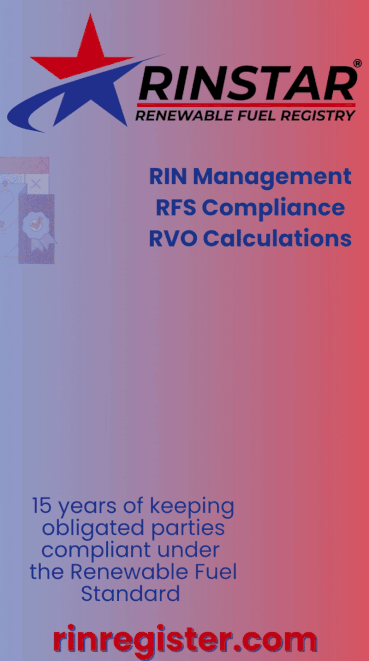REG throttles back biodiesel production, ramps up 3rd-party renewable diesel sales in 2021
- Renewable Energy Group Inc.
- Mar 2, 2022
- 5 min read

Renewable Energy Group Inc. announced its financial results for the fourth quarter and year ended Dec. 31, 2021.
Revenues for the fourth quarter were $882 million on 148 million gallons of fuel sold, and for the full year were $3.2 billion on 621 million gallons. Net income available to common stockholders was $52 million in the fourth quarter of 2021, and was $212 million for full year. Adjusted EBITDA was $57 million in the fourth quarter of 2021, and was $285 million for the full year.
“Delivering a 46 percent increase in adjusted EBITDA over 2020 demonstrates ongoing strong growth and further reflects our focus on operational excellence coupled with an exceptional safety achievement,” said CJ Warner, REG president and CEO. “REG was recently named to the 2022 Carbon Clean200 list by Corporate Knights and As You Sow. As one of only two energy firms making the list, we are proud to be a leader in the transition to sustainability by providing low-carbon fuels from renewable resources that help our customers achieve their climate goals now.”
Fourth Quarter 2021 Highlights
All figures refer to the quarter ended Dec. 31, 2021, unless otherwise noted. All comparisons are to the quarter ended Dec. 31, 2020, unless otherwise noted.
REG sold 148 million total gallons of fuel, a decrease of 2 percent. Self-produced North American biodiesel sales were down 9 million gallons driven primarily by the closure of the company’s Houston facility in the quarter and other optimization choices. Self-produced European biodiesel sales were down 3 million gallons due to supply-chain issues. Third-party renewable diesel sales increased 8 million gallons, due to an increase in the sale of REG Ultra Clean gallons.
REG produced 122 million gallons of biodiesel and renewable diesel, a decrease of 5 percent. North American biodiesel production decreased 7 million gallons and European biodiesel production decreased 3 million gallons, both due to the same factors described above for volumes sold. Renewable diesel production at our Geismar, Louisiana, facility increased 3 million gallons, due to the lapping of unplanned downtime in the fourth quarter of 2020 as well as continued strong run rates.
Revenues increased from $548 million to $882 million, largely driven by higher selling prices from a combination of an 86 percent increase in ULSD prices and a 69 percent increase in D4 RIN prices year over year, offset partially by fewer gallons sold.
Gross profit was $84 million compared to gross profit of $66 million in the fourth quarter of last year. The increase in gross profit was driven by a strong HOBO + 1.5x RIN spread, a $20 million increase in LCFS credit monetization due to the company’s downstream strategy, higher raw-material trading and coproducts gross profit, and a positive $22 million swing in risk management. These increases were partially offset by increased waste-based feedstock costs resulting in margin compression.
Operating income was $43 million compared to $31 million for the fourth quarter of 2020, driven by the same factors as those described above for gross profit, along with higher selling, general and administrative costs of $8 million, primarily due to a one-time bad debt expense write off as well as increases in travel and marketing costs.
Net income available to common stockholders was $52 million, or $1.03 per share, on a fully diluted basis, compared to $27 million, or 60 cents per share on a fully diluted basis, in the fourth quarter of 2020. The factors driving this difference are the same as those described above for operating income along with a $19 million tax benefit that primarily resulted from the release of a valuation allowance reserve in the U.S. related to the company’s Amber Resources acquisition and the release of a valuation allowance in Europe, partially offset by an increase in interest expense from the green bonds.
Adjusted EBITDA was $57 million compared to $46 million, with the increase resulting from the same factors described above.
At Dec. 31, 2021, REG had cash and cash equivalents, restricted cash, and marketable securities (including long-term) of $960 million, an increase of $603 million from Dec. 31, 2020. The increase in cash and cash equivalents is primarily due to the $535 million in funding, net of fees, from the company’s green-bond issuance as well the $365 million in funding, net of fees, from the company’s equity raise, offset by cash used to pay off debt, for the Amber Resources acquisition, and for capital expenditures.
At Dec. 31, 2021, accounts receivable were $158 million, an increase of $15 million from Dec. 31, 2020. Accounts payable at the end of the quarter were $163 million, an increase of $30 million versus the previous year. The value of the company’s inventory at the end of the quarter was $454 million, a $244 million increase from the end of the previous year mostly due to rising commodity values.
Full Year 2021 Results
All figures refer to the year ended Dec. 31, 2021, unless otherwise noted. All comparisons are to the year ended Dec. 31, 2020, unless otherwise noted.
REG sold 621 million total gallons, a decrease of 4 percent compared to 651 million gallons in 2020. North America biodiesel sales declined 27 million gallons, driven largely by optimization choices and the closure of the Houston facility. Lower margin petroleum diesel sales also decreased by 10 million gallons. These volume declines were partially offset by an 18-million-gallon increase in the sale of third-party renewable diesel gallons, due to an increase in the sale of REG Ultra Clean gallons.
REG gallons produced for the year decreased 7 percent, from 519 million gallons in 2020 to 480 million gallons in 2021. North American biodiesel production was down 32 million gallons, or 8 percent, primarily due to Houston shut down and production optimization choices cited above. Renewable diesel production was largely flat year over year in spite of the impact of Hurricane Ida on 2021 production.
Revenues increased from $2.1 billion to $3.2 billion, or 52 percent. The increase was largely driven by higher selling prices from a combination of a 134 percent increase in D4 RIN prices and a 66 percent increase in ULSD prices year over year, partially offset by fewer gallons sold.
Gross profit was $370 million, compared to gross profit of $268 million. The increase in gross profit was driven by a stronger margin environment, various optimization factors, including a $28 million increase in LCFS credit monetization and an improved sales mix, as well as a benefit from opportunistic feedstock sourcing. The HOBO + 1.5x RIN spread was up 14 percent year-over-year, and the overall margin improvement was reflected in the increase in gross profit from separated RINs, which was up $193 million year over year, mostly due to the price increase but also due to increased RIN monetization through execution of the company’s downstream optimization strategy. The increase in gross profit was partially offset by increased feedstock costs, which worked in tandem with D4 RIN pricing to keep the HOBO + 1.5x RIN spread relatively stable, and risk management gains that were $35 million less than full year 2020.
Operating income was $223 million compared to $127 million for the full-year 2020, driven by the same factors as those described above for gross profit. This increase was partially offset by a $21 million increase in selling, general, and administrative costs, primarily driven by increases in wages and benefits and legal expenses, and a one-time bad debt expense write off.
Net income available to common stockholders was $212 million, or $4.44 per share on a fully diluted basis for 2021, compared to $120 million, or $2.76 per share on a fully diluted basis for 2020. The factors driving this difference are the same as those described above for operating income along with an increase in interest expense from the green bonds and a $14 million tax benefit, that is primarily resulting from the release of a valuation allowance reserve in the U.S. related to the company’s Amber Resources acquisition as well as the release of a valuation allowance in Europe, offsetting overall tax expense through the third quarter.
Adjusted EBITDA was $285 million compared to $196 million, with the increase resulting from the same factors described above.
For financial charts and more, click here.


































